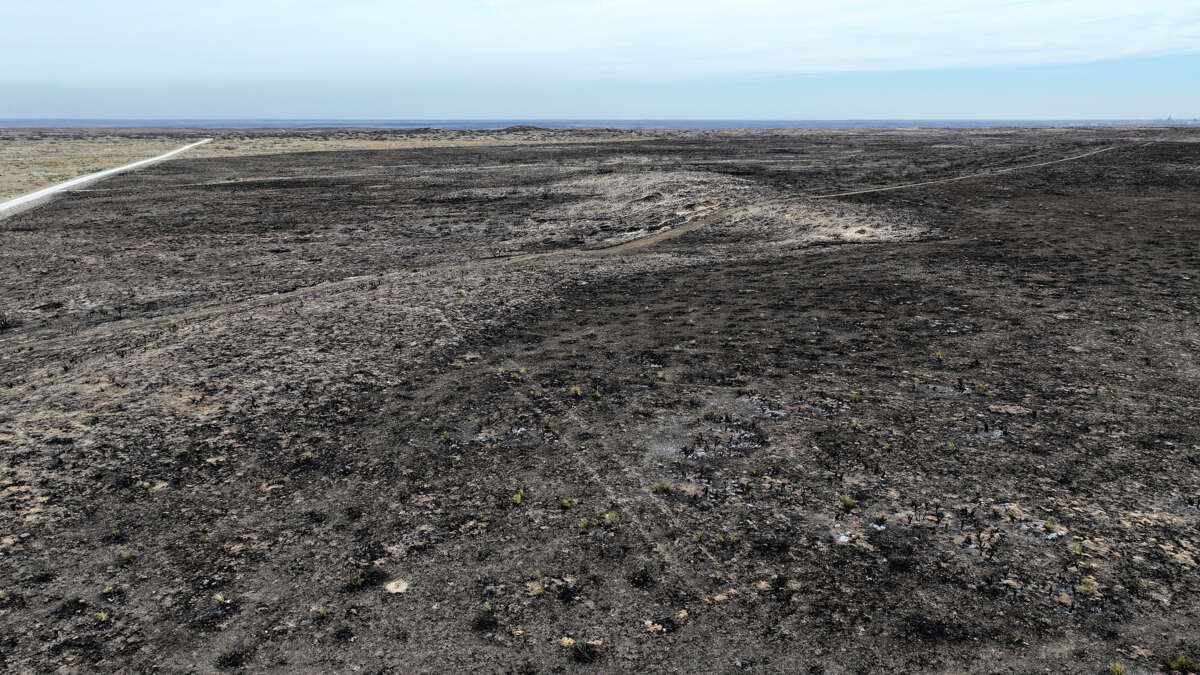Honest, paywall-free news is rare. Please support our boldly independent journalism with a donation of any size.
Climate experts are warning that the Smokehouse Creek fire in the Texas panhandle — now the largest in the state’s history with over over 1 million acres burned and counting — provides a horrifying look into a future of runaway temperatures that result in extreme destruction.
The fire is currently only 15% contained, but firefighters said Sunday they are hoping an approaching cold front will help them bring it under control. It’s not clear what started the fire, but high temperatures, dry conditions, and strong winds have fueled it. Wind speeds have reached over 50 miles per hour.
President Joe Biden was at the Texas border on Thursday and criticized climate deniers who don’t believe the climate crisis is contributing to these fires.
Climate change is contributing to the conditions that are making the fire so destructive, and more fires like this one are likely in the future. Sen. Bernie Sanders (I-Vt.) posted on Sunday about the need to fight the climate crisis to help reduce the frequency of these kinds of natural disasters.
We are in the middle of a climate crisis. We cannot sit back as these tragedies, like the devastating wildfires in Texas, become more frequent and more widespread. We must act. pic.twitter.com/ie6CC8ybxd
— Bernie Sanders (@BernieSanders) March 4, 2024
Writing in the New York Times over the weekend, journalist John Vaillant, author of the award-winning “Fire Weather: a True Story From a Hotter World,” argued that the recent scenes from Texas represent a “terrifying” preview of what’s to come — not just in Texas or any one place — but across the world. According to Vaillant:
It is alarming to see these fires and warnings in what is supposed to be the dead of winter, but fire, as distracting and dangerous as it is, is merely one symptom. What is happening in North America is not a regional aberration; it’s part of a global departure, what climate scientists call a phase shift. The past year has seen virtually every metric of planetary distress lurch into uncharted territory: sea surface temperature, air temperature, polar ice loss, fire intensity — you name it, it is off the charts.
At least two people have died from the Texas fire, and approximately 500 homes and businesses have been destroyed. Thousands of cattle have also died because of the fire.
“There’s a lot of fuel on the ground,” Texas A&M Forest Service spokesperson Jason Nedlo told CNN. “When you add high winds and low humidity to high fuel load levels, that’s when you get the conditions that are ripe for large, fast-burning wildfires.”
Climate scientists have been have been warning that the Smokehouse Creek fire is a vision of what’s to come if the world doesn’t address the climate crisis. A United Nations report from 2022 claimed that wildfires could increase by 30% by the year 2050.
The official wildfire season in Texas doesn’t start until April, but with 2024 expected to be the hottest year since records began, experts predict such seasons will start earlier and generate larger and more numerous fires in regions across the world.
In his piece for the Times, Vaillant equated the growing wildfire threat to metaphorical dragons moving in on human and animal populations from the horizon.
“My earnest advice is to listen to climate scientists, to meteorologists, to fire officials,” he concluded. “They are trying to save your lives. And if you see fire on the horizon, don’t fixate on the flames; pay attention to the wind. If it’s blowing toward you, the embers are, too, and you better get ready to go.”
Media that fights fascism
Truthout is funded almost entirely by readers — that’s why we can speak truth to power and cut against the mainstream narrative. But independent journalists at Truthout face mounting political repression under Trump.
We rely on your support to survive McCarthyist censorship. Please make a tax-deductible one-time or monthly donation.
